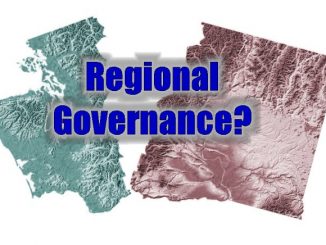
Wilderness Study Areas In Montana
We could chronologically provide a foundation of this article by beginning with the 1866 Mining Act as amended in 1872. However in the interest of length we offer a condensed trail of Wilderness Areas in Montana. Moving forward, Montana became a state known as the “Treasure State” in 1889. To fast forward to the current natural resource management debate we take a look at how natural resource management evolved.
In 1960, Congress passed the Multiple Use And Sustained Yield Act. In this federal legislation, the foundation of public land management was identified and the beneficial use of natural resources was protected.
In 1964 Congress took a step in the other direction and passed the 1964 Wilderness Act. In that legislation there was a noble cause to preserve areas of land that had not been developed and a call to preservation was being shouted across America.
Less than 10 years later, Montana entered into a Constitutional Convention where the foundation of the “Treasure State” was placed on the table for review. In this process the preservation aspect took a front seat among Montana Law makers revising the Montana Constitution in 1972.
With the change in federal law and a change in the Montana Constitution, environmentalism got a foothold in Montana. Mining and Logging was immediately targeted by both federal and state regulators. Over the next decade, designation proposals and legislation used to promote the idea became ground zero in a battle between environmentalists and the very heart of economic development in Montana.
Congress then moves forward with additional regulatory legislation that places what is known as analysis paralysis on resource management. The resource management act passed in 1973 made changes in the regulatory provisions with the United States Forest Service and Bureau of Land Management. Many of the Codes under Federal Regulations (CFR) were amended through piecemeal legislative actions.
With a host of proposals to expand on the 1964 Wilderness Act, additional areas of public land were proposed to be removed from multiple use. In 2009, Montana Senator Jon Tester brought forward what is known as a collaborative approach to public land management. S1470 “The Forest Jobs & Recreation Act” provided for focus on an experiment in the Beaverhead Deerlodge National Forest (BDNF)
With over 3.35 million acres of public land in the BDNF the proposal made would put only seven thousand acres per year up for natural resource development. The program would run ten years to include designation of an additional 577 thousand acres of wilderness.
The legislation failed but the concept of collaboration was brought front and center in the debate over natural resource management roared into the halls of Congress and the Montana Capitol. Since then, Senator Tester tried again to get his legislation through but could not get enough support.
Recently the United States Forest Service and Bureau of Land Management introduced the “Good Neighbor Program”. We recently covered a presentation of this concept that Montana Department of Natural Resources introduced to citizens in Granite County.
Here in Montana and Idaho this new approach is showcased as a preferred program that enters stake holders into collaborative management agreements with the state. The program fails to address inventoried roadless area resource management.
This last week, Montana PBS aired a special on the Wilderness Study Areas here in Montana.
In the PBS special, Missoula Democrat Tracy Stone-Manning that served as the natural resource advisor for Senator Tester is well known as an advocate of environmentalism.

Ms. Manning Also worked for Montana Governor Steve Bullock and is now an associate of the National Wildlife Federation. She purports to be a friend of natural resource management but shows full opposition to multiple use management.

Representative Kerry White from Bozeman Montana founded the multiple use organization “Citizens For Balanced Use” where legal action against violations of the laws protecting multiple use, have been the brand enjoyed by members of the organization.
Mr. White provided multiple use balance in the PBS special by countering Ms. Manning on proper resource management.
In the video production by Montana PBS, Mike McGinley is recognized as the lone local official in Beaverhead County who has been fighting for a balanced use management program on the BDNF for many years. Mr. McGinnley is also known for leading Beaverhead County in establishing local government coordination with the United States Forest Service.
Fas forward to 2019, we see new federal action in regards to the management of natural resources taking another step backwards in multiple use management.

S47 that recently passed the United States Senate is a 688 page bill that is an “Act to provide for the management of natural resources of the United States, and for other purposes.”
What the legislation does is codify new management regulations further advancing the preservation aspect of environmental protection. To our surprise, President Trump signed the legislation into law.
If Wilderness Study Areas are not released as required by law, and inventoried roadless areas are not returned to full multiple use management the economic health and security of America is on the table. Many we talked to are wondering if there will ever be enough wilderness designated to satisfy the environmental preservationists.
The views, opinions, or positions expressed by the authors and those providing comments are theirs alone, and do not necessarily reflect the views, opinions, positions of Redoubt News. Social Media, including Facebook, has greatly diminished distribution of our content to our readers’ newsfeeds and is instead promoting Main Stream Media sources. This is called ‘Shadow-banning’. Please take a moment and consider sharing this article with your friends and family. Thank you. Please support our coverage of your rights. Donate here: Paypal.me/RedoubtNews





Many thanks for this article. I’m a member of the Granite County Forest Management Advisory Committee (F MAC). I attended that meeting in Granite County about the Good Neighbor Program. FYI not one of the Granite County Commissioners attended. One of whom is the liaison with our committee. Guess he knows everything. LOL Thank you Redoubt News for being there. Good job.
Thank you for all you do in Granite County Elena,
We need to get together one of these first days.
Tim